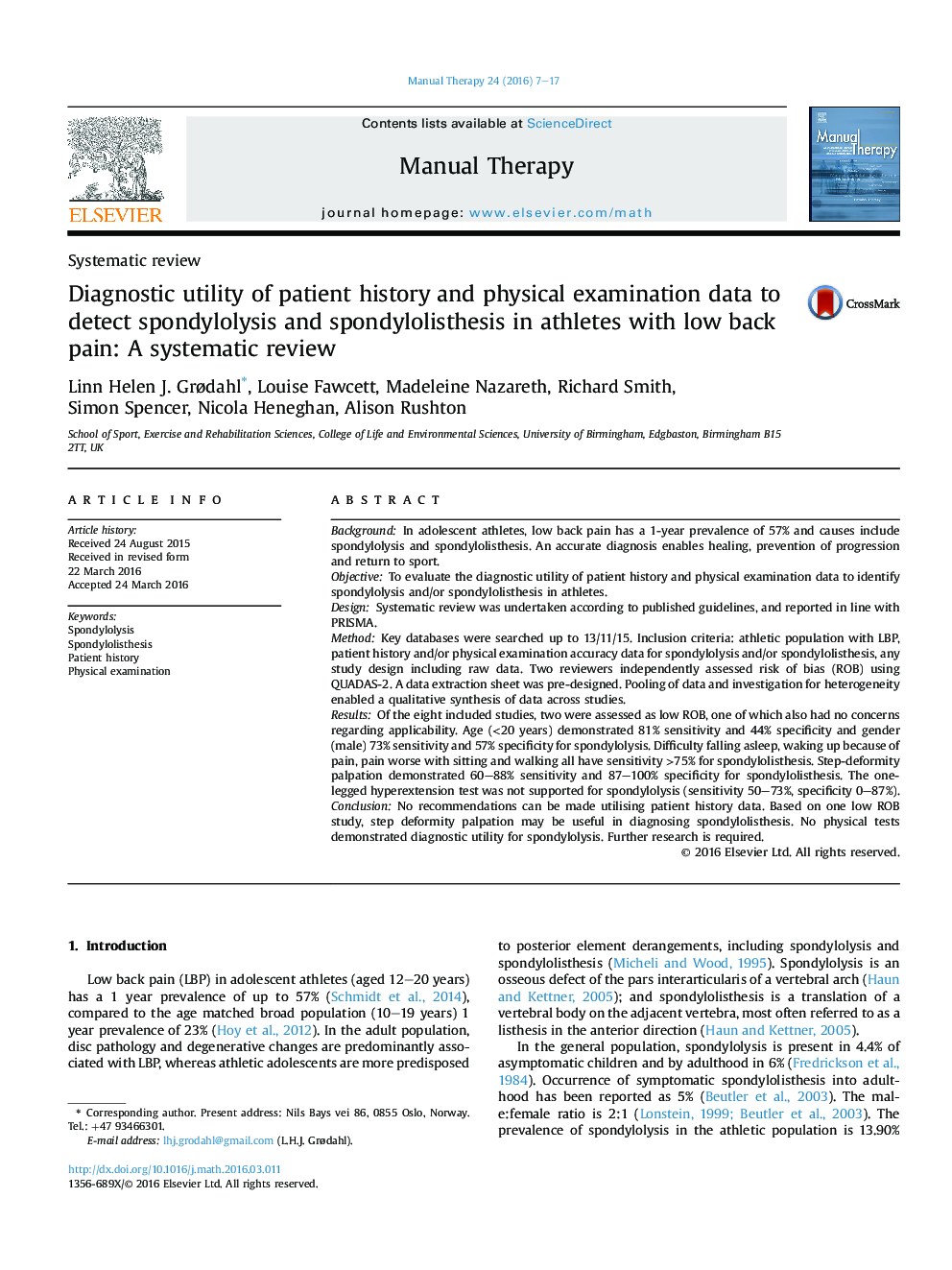| Article ID | Journal | Published Year | Pages | File Type |
|---|---|---|---|---|
| 2624909 | Manual Therapy | 2016 | 11 Pages |
•Systematic review of diagnostic data validity for spondylolysis/spondylolisthesis.•1 risk of bias study supports gender (male) and age <20 in diagnosing spondylolysis.•No clinical test included in this review has the ability to diagnose spondylolysis.•No recommendations regarding patient history data in diagnosing spondylolisthesis.•1 study support step-deformity palpation in diagnosing spondylolisthesis.
BackgroundIn adolescent athletes, low back pain has a 1-year prevalence of 57% and causes include spondylolysis and spondylolisthesis. An accurate diagnosis enables healing, prevention of progression and return to sport.ObjectiveTo evaluate the diagnostic utility of patient history and physical examination data to identify spondylolysis and/or spondylolisthesis in athletes.DesignSystematic review was undertaken according to published guidelines, and reported in line with PRISMA.MethodKey databases were searched up to 13/11/15. Inclusion criteria: athletic population with LBP, patient history and/or physical examination accuracy data for spondylolysis and/or spondylolisthesis, any study design including raw data. Two reviewers independently assessed risk of bias (ROB) using QUADAS-2. A data extraction sheet was pre-designed. Pooling of data and investigation for heterogeneity enabled a qualitative synthesis of data across studies.ResultsOf the eight included studies, two were assessed as low ROB, one of which also had no concerns regarding applicability. Age (<20 years) demonstrated 81% sensitivity and 44% specificity and gender (male) 73% sensitivity and 57% specificity for spondylolysis. Difficulty falling asleep, waking up because of pain, pain worse with sitting and walking all have sensitivity >75% for spondylolisthesis. Step-deformity palpation demonstrated 60–88% sensitivity and 87–100% specificity for spondylolisthesis. The one-legged hyperextension test was not supported for spondylolysis (sensitivity 50–73%, specificity 0–87%).ConclusionNo recommendations can be made utilising patient history data. Based on one low ROB study, step deformity palpation may be useful in diagnosing spondylolisthesis. No physical tests demonstrated diagnostic utility for spondylolysis. Further research is required.
